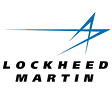Lockheed Martin introduces new satellite lineup
 On September 19, Bethesda, MD-based Lockheed Martin debuted a new family of satellite buses that form the core of nearly every space mission. From nanosats to high-powered satellites, the versatile lineup incorporates dozens of major enhancements and hundreds of common components that speed production and reduce cost.
On September 19, Bethesda, MD-based Lockheed Martin debuted a new family of satellite buses that form the core of nearly every space mission. From nanosats to high-powered satellites, the versatile lineup incorporates dozens of major enhancements and hundreds of common components that speed production and reduce cost.
“We’ve invested $300 million in revamping our satellite solutions from top to bottom, applying what we learned from hundreds of small sat and geostationary missions,” said Rick Ambrose, Lockheed Martin Space Systems executive vice president. “We now have one family for every mission fully integrated with our end-to-end capabilities in ground stations, payloads and software applications. As defense, scientific and commercial missions change and evolve, we’ll be ready with proven, powerful and flexible technology to meet tomorrow’s demands.”
The new family of satellite buses includes:
- LM 50™ Series: These flexible nanosats now have a wider range of size and power options. Plus, they now benefit from the experience and technology of Terran Orbital.
- LM 400™ Series: The upgraded version of the company’s legacy small sat bus packs more propulsion than other buses its size and can fly in low Earth orbit, geostationary or even interplanetary. Production efficiencies like 3-D printing speed its order-to-delivery timeline to as little as 24 months.
- LM 1000™ Series: Lockheed Martin’s newest bus for mid-size missions, the LM 1000 features the most commonality with LM 2100 to reduce cost and host higher-power payloads, such as remote sensing missions. Like the LM 400, LM 1000 is built for multiple orbits or interplanetary missions.
- LM 2100™ Series: The modernized A2100® bus has a new name and a host of new enhancements. The powerful spacecraft has 26 improvements that add more power and flexibility to a proven platform.
“As technology evolves, customers have told us they want faster production cycles and more versatility for their dollar, and we’re listening,” said Kay Sears, vice president of strategy and business development for Lockheed Martin Space Systems. “We’re transforming the way we design, engineer and produce satellites to deliver the same performance and precision our customers expect from Lockheed Martin, but faster and at a lower price.”
For the first time, all of Lockheed Martin’s satellites will share common components, and more than 280 have been identified. The multiyear effort to identify common systems aims to reduce cost, shorten design time and increase reliability with trusted components. Lockheed Martin’s software support systems also enhance flexibility and make each bus rapidly reconfigurable. While configurations may vary in each series, the core elements of each bus will retain commonality with other satellites, including missions in military, civil and commercial markets.
Source: Lockheed Martin








